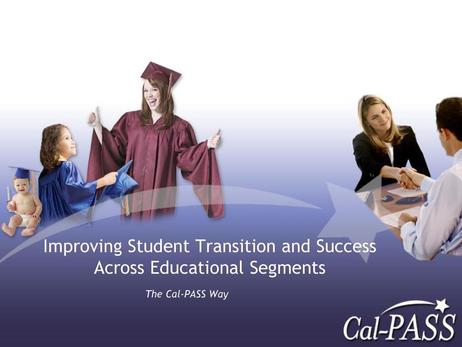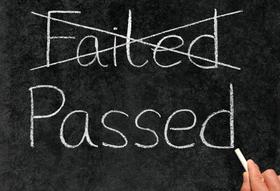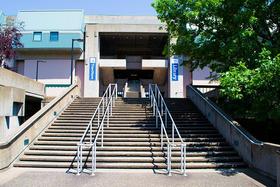A majority of California’s school districts, community colleges, and four-year universities are participating in CalPASS, a groundbreaking program that is improving their students’ academic success.
The CalPASS program makes student achievement data from kindergarten through college available to teachers of all levels. The San Diego Union-Tribune reports that CalPASS “has collected 346 million student records on 25 million students, including information on demographics, student performance and test scores.” However, students’ test scores are not connected to any personal or identifying information. Instead, teachers, professors, and administrators at all levels of California’s public education system can view the data trends, using the information to determine their instructional decisions.
CalPASS, which stands for California Partnership for Achieving Student Success, is based in Grossmont Community College in San Diego. It was started in 1998, when Brad Phillips, then the director of research, planning, and academic services at Grossmont, realized that there was no existing channel through which he could ascertain how students from his two-year college were performing academically after they transferred to four-year colleges. Phillips decided that he needed to create such a system so that teachers and administrators could use the information to improve how students are taught.
From the CalPASS website: "Cal-PASS Plus, created through leadership and funding by California Community College Chancellor’s Office, is an accessible, actionable and collaborative pre-K through 16 system of student data.
Cal-PASS Plus’ mission is to provide actionable data to help improve student success along the education-to-workforce pipeline. Collaboration using this data will inform better instruction, help close achievement gaps, identify scalable best practices, and improve transitions. Cal-PASS Plus offers longitudinal data charts, detailed analysis of pre-K through 16 transitions and workplace outcomes, information and artifacts on success factors, and comparisons among like universities, colleges, K-12 school systems and schools.
Cal-PASS Plus also facilitates Regional Learning Councils to regularly convene pre-K through 16 leaders, representatives and stakeholders throughout the state so they may share data and success factors and collaborate to improve education and workforce outcomes."
This video explains how CalPASS works.
How CalPASS has Benefited Community College Students
By allowing instructors to access educational data spanning from kindergarten to college, California’s community college students have enjoyed a myriad of benefits.
Aligns High School and Community College Curriculum
According to its newsletter, CalPASS aims to “reduce barriers between the segments [of the public education system] and promote seamless transition for students.”
By allowing high school teachers to view their students’ community college academic results, CalPASS helps those teachers to redesign their curriculum, focusing on areas in which students tend to struggle once they reach college. It also allows high school teachers to ensure they are teaching their students the skills they will need to be successful in community college and in four-year universities.
This video explains how actionable data can accelerate student success.
Helps Community College Instructors to Improve Instruction
Before CalPASS, instructors at community colleges often suffered from a lack of information about the abilities their students possessed upon entering their classroom. Now community college instructors can examine the data and trends, ascertaining the abilities their incoming students possess. This allows community college instructors to tailor their instruction to the specific strengths and weaknesses of their students.
In addition, CalPASS data can help community college instructors evaluate the quality of their own teaching and make changes accordingly. Community college teachers and administrators can track the progress of their students who transfer to four-year universities to determine how they fare academically. This information can reveal learning gaps, which will help community colleges design new academic programs to better prepare their students.
Improves College Student Placement in Entry-Level Courses
CalPASS data allows community college faculty to develop a better sense of the academic abilities of their incoming students, as well as their overall performance in high school courses. With this data, community colleges can interpret what a grade of “A,” “B,” or “C” in a given high school course will mean for the student’s readiness for college-level work. Community college counselors use this information to place students in appropriate courses upon their matriculation at community college. This can make a student’s path to completing a degree or transferring to a four-year college smoother.
Reduces Number of Students Who Need Remedial Courses
By allowing high school teachers to see where their students stumble academically at the community college level, CalPASS can help create more targeted and focused instruction at the high school level. Over the long term, this should lead to a reduction in the number of students who require remedial math or English courses when they enter community college.
Widespread Use of the System in California
The San Diego Union-Tribune reports that CalPASS is now used by “about two-thirds of the state’s school districts, all 110 community colleges, the University of California system, and all but five universities in the California State University system.” Such widespread use of the system is a large part of its effectiveness as a tool for improving students’ academic outcomes.
The CalPASS system is certainly innovative, and its full benefits have yet to be revealed. Allowing the educational system to analyze their students’ academic performance and trends can only bode well for the long-term success of community college students.
Questions? Contact us on Facebook. @communitycollegereview




























